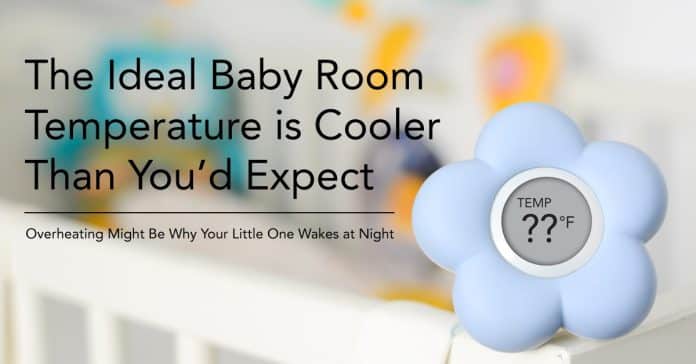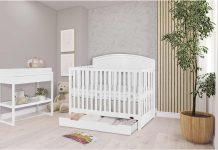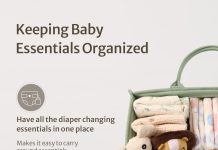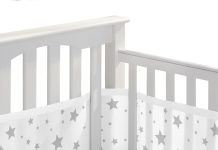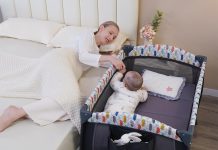One crucial aspect of caring for a one-year-old is ensuring their environment is comfortable and safe. Among the many concerns that parents may have is determining the ideal room temperature for their little one. Finding the perfect balance that promotes healthy sleep and overall well-being is essential. This article explores the recommended temperature range for a one-year-old’s room, considering factors such as comfort and safety.
Review contents
Importance of Room Temperature for 1-Year-Olds
When it comes to the well-being of our precious 1-year-olds, maintaining the right room temperature is of utmost importance. The temperature of their environment can directly impact their sleep, health, and overall comfort. As parents, we are responsible for ensuring that our little ones are in an environment that promotes their well-being. By understanding the ideal room temperature for 1-year-olds and taking the necessary steps to create a sleep-friendly and comfortable environment, we can help them thrive.
Recommended Room Temperature Range
Understanding the ideal room temperature for 1-year-olds is vital in ensuring their comfort and safety. According to experts, a temperature range of 68°F to 72°F (20°C to 22°C) is generally recommended for infants and young children. However, considering other factors that may influence the perceived temperature, such as humidity and air circulation, is essential. These factors will help us determine the most suitable room temperature for our little ones.
Ensuring Comfortable Sleep
Proper sleep is crucial for the growth and development of 1-year-olds. Maintaining an optimal temperature range in their room can significantly contribute to their ability to fall and stay asleep. Studies suggest a slightly more relaxed environment, around 68°F (20°C), promotes better sleep quality. Creating a sleep-friendly environment involves more than just setting the right temperature. To optimize the sleep experience for our little ones, we can also consider factors such as noise level, lighting, and the use of soothing bedtime routines.
Impact of Room Temperature on Health
Extreme temperatures can pose risks to the health of 1-year-olds. When the room temperature is too hot or cold, it can affect their respiratory health and potentially exacerbate allergies. Frigid temperatures may increase the risk of respiratory infections, while excessive heat can lead to dehydration and heat-related illnesses. Maintaining a comfortable room temperature within the recommended range can help prevent these risks and ensure our little ones stay healthy and happy.
Ensuring Proper Dressing for the Room Temperature
In addition to setting the right room temperature, dressing our 1-year-olds appropriately for the environment is essential. When the room temperature is more relaxed, we can dress them in comfortable layers to keep them warm. On the other hand, when the room is warmer, lightweight and breathable clothing is ideal. It is essential to strike a balance and avoid overdressing or underdressing our little ones, leading to discomfort and temperature regulation issues.
Utilizing Thermostats and Temperature Monitoring
To maintain a consistent and suitable room temperature, it is recommended to use thermostats. Thermostats allow us to control and adjust the temperature as needed. By regularly monitoring the temperature in our baby’s room, we can ensure that it remains within the desired range. Knowing that our little ones are in a safe and comfortable environment will give us peace of mind.
Preventing Overheating and Heat-Related Risks
Overheating poses a significant risk to 1-year-olds, as it can lead to heat-related illnesses and potentially contribute to Sudden Infant Death Syndrome (SIDS). It is essential to be aware of the signs of overheating, such as flushed skin, sweating, rapid breathing, and excessive fussiness. To prevent overheating, we can dress our little ones in natural and breathable fabrics, keep their bedding minimal, and use fans or air conditioning to circulate the air in their room. By taking these precautions, we can minimize the risk of heat-related issues and ensure the safety of our little ones.
Winter Room Temperature Considerations
During the colder months, addressing the challenges posed by low temperatures is necessary while maintaining a safe room environment for our 1-year-olds. It is essential to keep the room warm enough to prevent discomfort and the risk of illness. Using a space heater or keeping the central heating system at an appropriate temperature can help maintain warmth. However, it is crucial to ensure that heaters are placed safely, out of reach of our curious little explorers, and monitored closely to avoid accidents.
Summer Room Temperature Considerations
When summer brings higher temperatures, keeping our little ones cool and comfortable is essential. Air conditioning or fans can help regulate the room temperature and create a refreshing environment. However, it is essential to use caution, as frigid air or strong drafts can cause discomfort and potentially lead to respiratory issues. Striking a balance between a comfortable temperature and appropriate airflow is critical during summer.
Room Temperature and Sleepwear Options
The choice of sleepwear for our 1-year-olds should align with the room temperature to ensure their comfort. In cooler temperatures, sleep sacks or thicker blankets can provide the necessary warmth.
However, it is essential to ensure that the sleepwear is not too restrictive or bulky, as it may interfere with their mobility and increase the risk of overheating. Lightweight sleepwear or even a simple onesie can be sufficient in warmer temperatures. Selecting sleepwear that allows them to maintain a comfortable body temperature throughout the night is crucial.
In conclusion, the room temperature plays a significant role in the well-being of our 1-year-olds. Understanding and maintaining the recommended temperature range can create a safe, comfortable, and sleep-friendly environment.
Alongside the room temperature, we should also consider appropriate dressing, utilize thermostats, and monitor the temperature regularly. By taking these measures, we can ensure the health, comfort, and overall happiness of our little ones.

